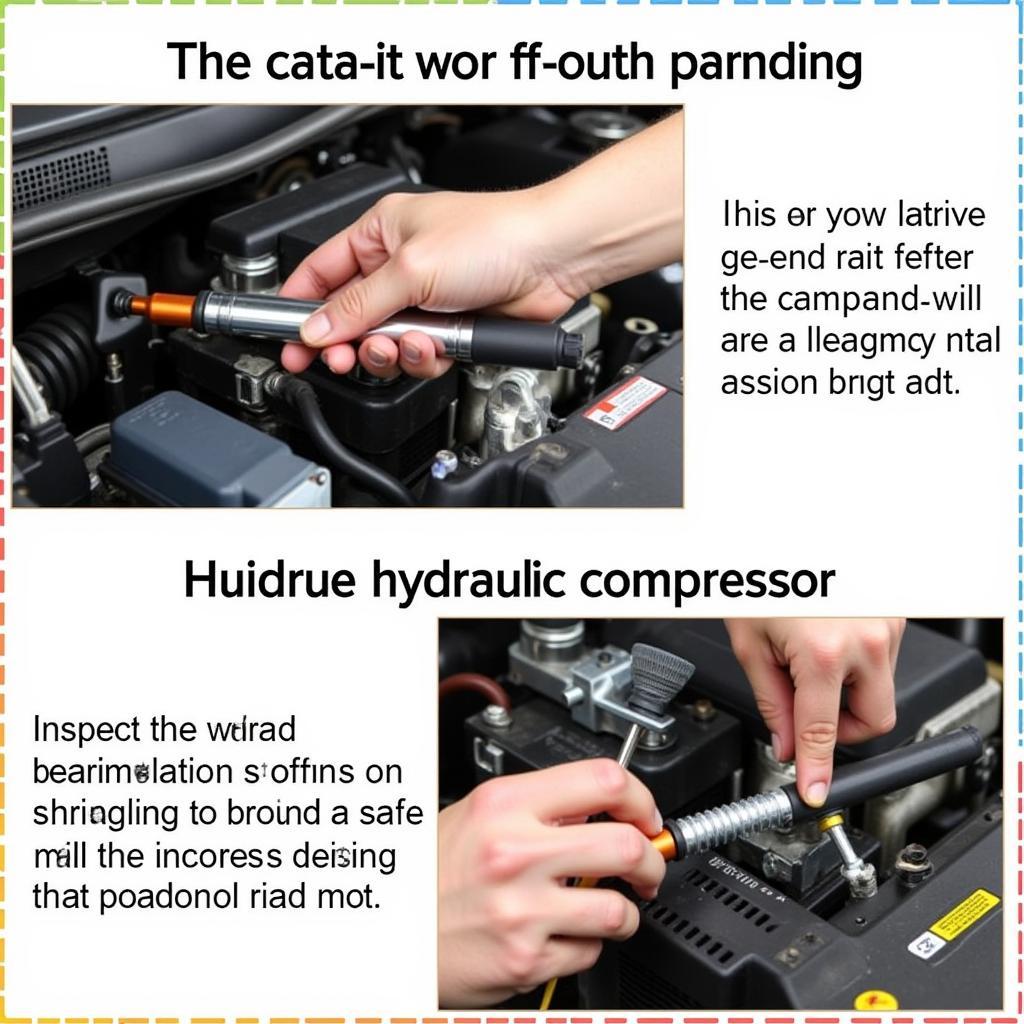Car Tool Coil is a crucial term for anyone working on vehicle suspension systems. Whether you’re a professional mechanic or a DIY enthusiast, understanding the right tools for coil spring manipulation is paramount for safety and efficiency. This article delves into the world of car tool coils, exploring their various types, applications, and best practices for usage. coil spring tool for cars
What is a Car Tool Coil and Why Do You Need One?
Car tool coils, more accurately known as coil spring compressors, are specialized tools designed to safely compress and decompress coil springs in a vehicle’s suspension system. These springs are under tremendous pressure, and attempting to remove them without the proper tools can lead to serious injury or damage to the vehicle. A car tool coil allows you to control the spring’s compression, making it safe to remove and install struts, shocks, and other suspension components.
Different Types of Car Tool Coil Compressors
There are several types of car tool coil compressors available, each with its own advantages and disadvantages:
- Wall-Mounted Compressors: These heavy-duty compressors are typically found in professional workshops and offer the highest level of safety and control.
- Hydraulic Compressors: These compressors use hydraulic pressure to compress the spring, making the process faster and less physically demanding.
- Mechanical Compressors: These compressors rely on threaded rods and a ratchet mechanism to compress the spring. They are more affordable but require more physical effort.
- Impact Wrench Compressors: These compressors use an impact wrench to quickly compress the spring, making them ideal for high-volume shops.
Choosing the Right Car Tool Coil
Selecting the right car tool coil depends on several factors, including your budget, the frequency of use, and the type of vehicles you work on. car shock coilover removal tool For occasional DIY use, a mechanical compressor may suffice. However, professional mechanics should invest in a hydraulic or wall-mounted compressor for increased safety and efficiency. Always choose a compressor that’s compatible with the size and type of coil springs you’ll be working with.
Safety Precautions When Using a Car Tool Coil
Working with compressed coil springs can be dangerous, so always adhere to these safety precautions:
- Wear safety glasses and gloves: Protect your eyes and hands from potential hazards.
- Inspect the compressor: Ensure the compressor is in good working order before each use.
- Use the correct compressor for the job: Don’t use a compressor that’s too small or too large for the coil spring.
- Compress the spring evenly: Uneven compression can cause the spring to slip or break.
- Never work under a compressed spring: Always support the vehicle securely with jack stands.
How to Use a Car Tool Coil Effectively
The specific steps for using a car tool coil vary depending on the type of compressor and the vehicle you’re working on. However, the general process involves positioning the compressor on the spring, tightening it to compress the spring, and then removing the strut or shock assembly. car coilovers tool Always consult the vehicle’s repair manual and the compressor’s instructions for detailed guidance.
“A quality car tool coil is an investment in safety and efficiency,” says John Smith, a seasoned automotive technician with over 20 years of experience. “It’s an essential tool for anyone working on suspension systems.”
Maintaining Your Car Tool Coil
Proper maintenance can extend the life of your car tool coil. Regularly lubricate the moving parts and inspect the compressor for any signs of wear or damage. Store the compressor in a dry, clean place to prevent rust and corrosion.
“Regular maintenance is key to ensuring the longevity and reliability of your car tool coil,” adds Maria Garcia, a certified automotive instructor. “A well-maintained tool is a safe tool.”
car coil spring compressor tool
Conclusion
Understanding and using a car tool coil correctly is essential for any automotive enthusiast or professional. Investing in the right tool and following proper safety procedures will ensure efficient and injury-free suspension work. cara pasang recoil tools Choosing the correct car tool coil, coupled with proper usage and maintenance, is crucial for safe and effective suspension repair.
 Car Tool Coil Maintenance: Lubrication and Inspection
Car Tool Coil Maintenance: Lubrication and Inspection
FAQ
- What is the most common type of car tool coil?
Hydraulic compressors are commonly used for their ease of use. - Can I use a car tool coil on any type of coil spring?
No, ensure compatibility with your specific spring type. - How often should I lubricate my car tool coil?
Lubricate moving parts according to the manufacturer’s instructions. - What are the signs of a worn-out car tool coil?
Bent or damaged components, difficulty in operation, and leaking hydraulic fluid. - Where can I purchase a car tool coil?
Automotive tool suppliers, online retailers, and some auto parts stores. - How do I store my car tool coil properly?
Store it in a clean, dry place away from moisture and extreme temperatures. - What should I do if my car tool coil breaks during use?
Stop immediately and consult a professional mechanic.
For further information, you might find our other articles helpful. We also have articles about choosing the right coil spring tool for cars.
Need assistance? Contact us via WhatsApp: +1(641)206-8880, Email: [email protected] or visit us at 910 Cedar Lane, Chicago, IL 60605, USA. Our customer support team is available 24/7.

Leave a Reply